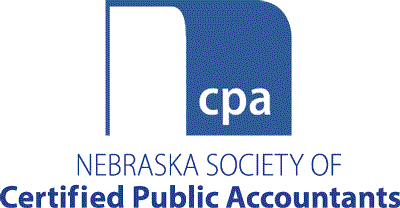By Alexander J. Wolf and Nicholas W. O’Brien, Koley Jessen
the SECURE Act
The Setting Every Community Up for Retirement Enhancement Act of 2019, known as the SECURE Act (the Act), was adopted last year and took effect January 1, 2020. The Act made significant changes to retirement benefits, including 401(k), 403(b), 457(b), ESOP, and IRA accounts, and implemented new rules regarding payout of retirement accounts to a deceased participant’s beneficiaries.
Prior to the Act, most non-spouse individual beneficiaries of an inherited retirement account could take distributions from the account over their life expectancy through a so-called “stretch IRA,” delaying receipt of the account funds over a period of many years. By delaying receipt of retirement account funds, the beneficiary could delay the associated income tax liability and take advantage of a significant deferral opportunity. This opportunity was also available to certain types of trusts, generally called “conduit trusts,” that were designated as the beneficiary of a retirement account.
With the adoption of the Act, a non-spouse individual beneficiary’s ability to “stretch” withdrawals from inherited retirement accounts over the beneficiary’s lifetime has largely been eliminated. Instead, in most instances, the account must be fully distributed within 10 years after the participant’s death and all related income tax paid at that time.

Because of these changes, your clients who own retirement accounts should review their retirement account beneficiary designations and estate plans to determine if changes are advisable. Below is a series of questions and answers designed to help you guide your clients regarding designation of beneficiaries under the Act.
Q: Did the Act change the rules applicable to a spouse named as beneficiary?
A: The Act did not change a surviving spouse’s ability to “roll over” a retirement account or to use a stretch IRA. However, your client should consider the effect the Act would have if their spouse predeceases them.
Q: Should your client consider changes if they have designated their children as beneficiaries?
A: Probably not. Although most non-spouse individuals named as beneficiaries of retirement accounts cannot use a stretch IRA, those individuals may still take advantage of a 10-year payout of the account, thereby delaying receipt of the account funds and the associated income tax liability until the end of that 10-year period. If your client’s children are adults and capable of managing inherited assets, then it is likely still preferable the children are named as direct beneficiaries.
If your client’s children are minors, they will still qualify for “stretch” payout based on their life expectancies, but only until they reach the age of majority, at which time the 10-year payout rule becomes applicable. In most instances, it is inadvisable for your client to name either minor children or adult children with spendthrift concerns as direct beneficiaries, and they should instead consider naming a trust for the benefit of such children as the beneficiary.
Q: Should your client consider changes if they
have designated a trust as beneficiary of a retirement account?
A: Perhaps. Before the Act, qualifying trusts could take advantage of stretch payout of a retirement account over the lifetime of the oldest trust beneficiary. Now, qualifying trusts must withdraw the full amount of the retirement account within 10 years. Furthermore, if the trust was a so-called “conduit trust,” the trustee will be forced to pay the entire amount of the retirement account, after payment of the associated income tax, outright to the trust beneficiaries within 10 years. This change likely adversely affects your client’s estate planning if their objective was to delay distributions until children reach certain ages or where they wanted assets retained in lifetime trust for the beneficiaries. Those clients may wish to name a trust structured as an “accumulation trust” as the beneficiary, which allows the trustee the discretion on whether to pay out or retain required minimum distributions within the trust, even after 10 years.
Q: Should your client consider changes if they have designated a charity as beneficiary?
A: No. The Act does not negatively impact the designation of charities as beneficiaries of retirement accounts.
Q: Should your client consider changes for Roth IRAs?
A: Probably not. The distribution rules under the Act apply to Roth IRAs. Most non-spouse individuals named as beneficiaries of Roth IRAs will be required to withdraw the account funds within 10 years. However, since the distributions from a Roth IRA are tax free, the beneficiaries can let the Roth IRA grow and then take the entire distribution in year 10 with no income tax consequences. Because of this, it is unlikely that the Act would change the thinking behind naming beneficiaries of a Roth IRA unless your client planned to delay distribution until children reach certain ages or where they wanted assets retained in lifetime trust for the beneficiaries.

Alex Wolf is a shareholder in Koley Jessen’s Estate, Succession, and Tax Department and is president of the firm. Wolf’s practice focuses extensively on estate planning and estate administration, business succession planning, and organizational/tax planning for closely held businesses and nonprofit entities. He can be reached at alexander.wolf@koleyjessen.com.

Nick O’Brien is an associate in Koley Jessen’s Estate, Succession, and Tax Department. He provides services ranging from basic estate planning, business planning services, and trust and estate administration to wealth transfer techniques and counseling clients on charitable planning matters. He can be reached at nick.obrien@koleyjessen.com.
This story appears in 2020 Issue 3 of the Nebraska CPA Magazine.









